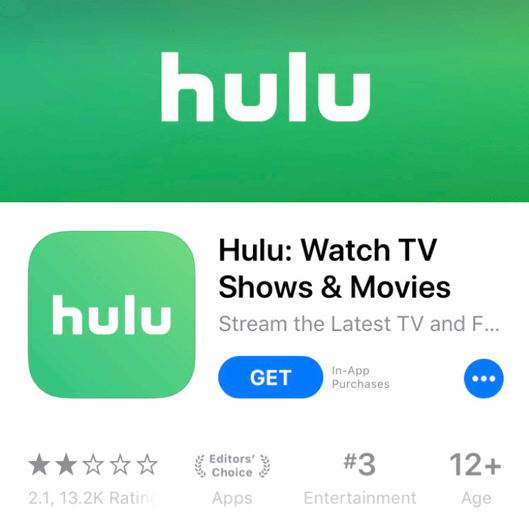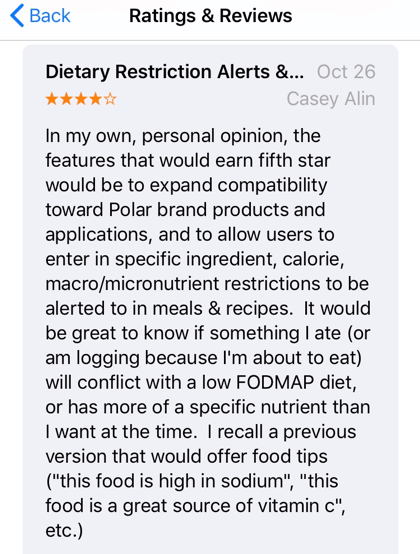
5 Best Practices for Apple Search Ads
Posted on July 3rd, 2024
Are you leveraging Apple Search Ads the right way? Take a look at these recommendations to optimize your paid campaigns and target the right users.

You have the next best idea for a new app, and perhaps this is something you’ve been mulling over for a long time or maybe you just recently drafted the idea on a whim with friends in passing. Either way, this new app has the potential to be created. Luckily for you, you’ve taken the proactive first step into actualizing this idea by doing your research. If you’ve been paying attention to how the mobile space has changed in recent years, you’re already one step ahead of the game. Many developers don’t know how to optimize their app after it’s been launched. Paired with a preliminary road map, it’s recommended that developers implement an App Store Optimization (ASO) strategy to ensure that their app is visible in the app stores to reach its maximum audience. Creating an app, even if it’s just in the idea stages, still needs to have a step-by-step process to make sure that it’s created successfully. Every step in this process should be meticulously thought out to avoid pitfalls in the future. Read the following list below to start brainstorming a roadmap and act on your big idea.
Defining what your app does is possibly the most important exercise you can do before creating it. Bring out the old pen and paper and fully fledge out everything and anything you know about the app. Ask yourself important questions so that future users won’t have to ask them for you.
However, the most important question you should be able to answer is, “Can you define the app clearly?” If someone were to ask what the app is, could you provide a short and concise one to two sentence answer? If someone were to ask to summarize what “Hulu” is, the answer is short and simple. Hulu is a video-streaming service that lets users watch their favorite movies and TV series anytime or anywhere. Users immediately know what the app does and what problem it aims to solve. It is a streaming service where users can watch TV and movies all in one place for a small service fee every month.  Make sure that your app isn’t a catchall and contains every possible idea. If the app has too many features without a clearly defined core feature, it will be overwhelming for users and drive down retention rates. Clearly define what the app’s core functionalities are because it will be easier for users to categorize the app and know exactly what to use it for.
Make sure that your app isn’t a catchall and contains every possible idea. If the app has too many features without a clearly defined core feature, it will be overwhelming for users and drive down retention rates. Clearly define what the app’s core functionalities are because it will be easier for users to categorize the app and know exactly what to use it for.
Since there are over 3 million apps in the app stores, a considerable amount of market research has already been done for you. Take a look at other apps in the same category so you can understand the types of apps that audiences currently respond to. The app stores are treasure troves of free information. You can look at a similar app’s ratings and reviews for real feedback from actual users. Now you have the opportunity to restructure certain features of your app to avoid common problems that other developers in the same category currently face.  3. Invest in Marketing The motto, “if we build it, they will come” is no longer applicable in the mobile entertainment space since nearly every idea has already been done once. It’s important to set aside a budget to market your idea/app so it will appear before competitors. During the preliminary “brainstorming” stage of your app, you can still invest time into marketing through social media channels and content websites such as journals or blogs. Gaining a following prior to an app’s launch is especially advantageous because the app will already have a built-in user base that are prepared to download.
3. Invest in Marketing The motto, “if we build it, they will come” is no longer applicable in the mobile entertainment space since nearly every idea has already been done once. It’s important to set aside a budget to market your idea/app so it will appear before competitors. During the preliminary “brainstorming” stage of your app, you can still invest time into marketing through social media channels and content websites such as journals or blogs. Gaining a following prior to an app’s launch is especially advantageous because the app will already have a built-in user base that are prepared to download.
Once you have mapped out the essential features of the app, invest in A/B testing ads on Google or Facebook to determine how much interest your app generates. This could be as simple as creating a landing page that describes the app or offering users the option to pre-order on either the App Store or Google Play Store. Testing ads while your app is still in the development stages may seem like an unnecessary expense, but consider this a safety net for later. You can learn from your mistakes and make adjustments based off user trends and behaviors by minimizing your potential loss.
While you may have great app ideas, you need to make sure that your app generates a revenue. By defining the type of audience you want to target, you can then determine on whether your app should be free or paid. You can also check out your competition to see how their monetization strategy is organized. By examining the differences, you can evaluate if it would be a worthwhile endeavor to create not only a free version of your app, but also a premium version that includes more features, no ads, and more.
Don’t assume that users will flock to your app once it launches. Creating an app is a harmonious process where each step must be done correctly and with purpose. Know what the app’s motive is and who it is created for. Conduct extensive research on the current market demand and competition within your app’s potential category to learn from their mistakes. And lastly, don’t skimp on your marketing budget because if you don’t drive awareness to your app, users will not know it exists. Always keep in mind that users won’t find your app; your app must find its users.

Are you leveraging Apple Search Ads the right way? Take a look at these recommendations to optimize your paid campaigns and target the right users.

Ghostly happenings are among us... and in your app listing too? If you aren't leveraging the power of app seasonality to make relevant tweaks to your store listing you're leaving precious engagement and conversions on the table.

Developers on the iOS App Store should plan in advance of the upcoming Holiday Schedule to allow enough time for apps to get approved during the busy holidays.